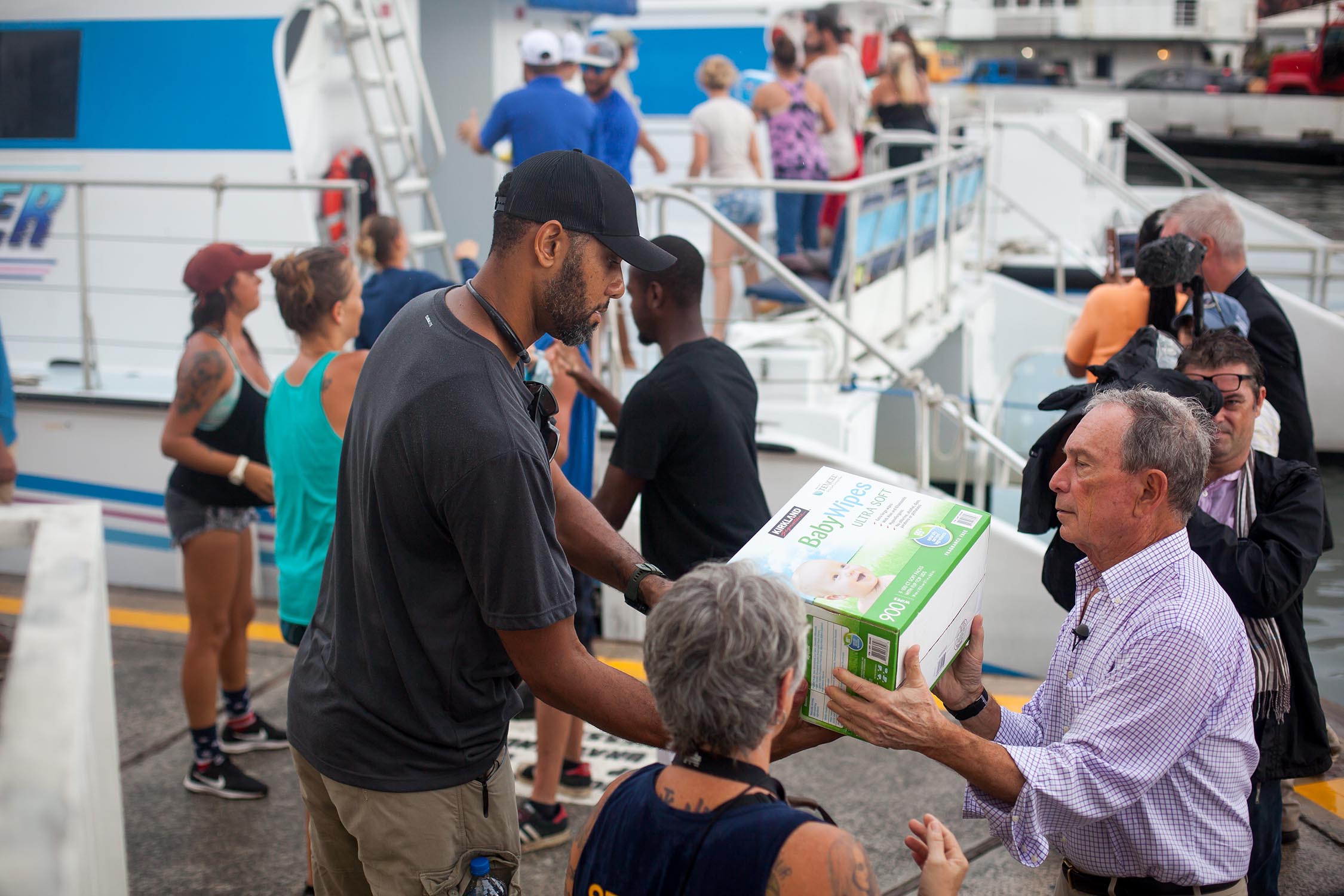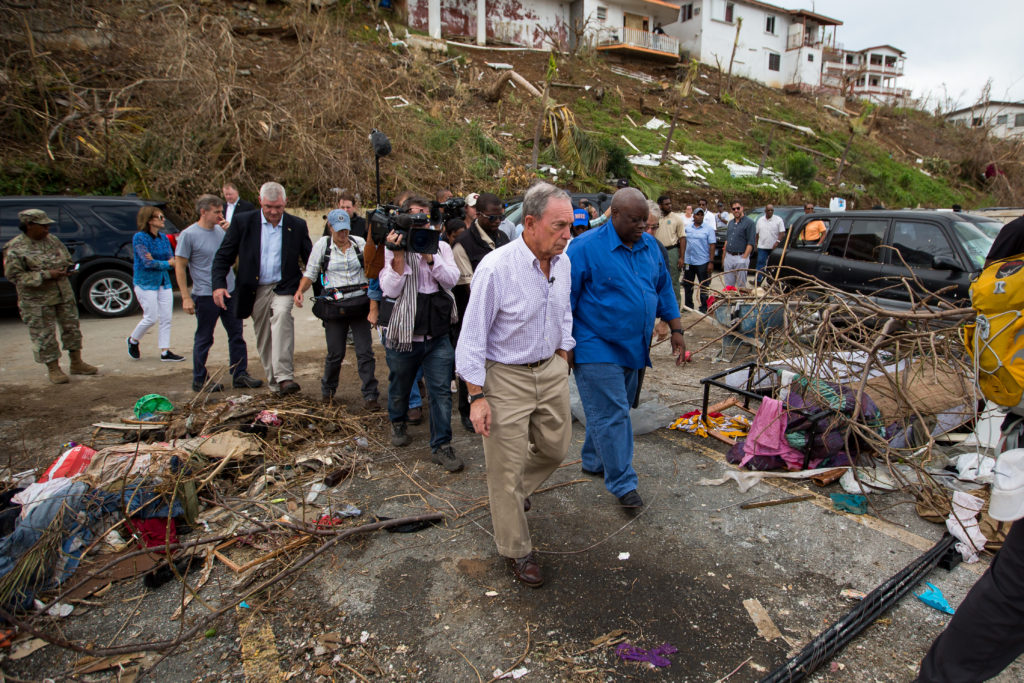
CRUZ BAY — Former New York City mayor Michael Bloomberg told USA Today that he didn’t plan on getting involved in the hurricane recovery of the territory — but, yet and still — somehow the billionaire did.
His efforts began in St. John where his Bloomberg L.P., co-founder Tom Secunda has a home, according to USA Today.
And there’s a chance it could grow into a Bloomberg specialty as coastal communities and islands like these cope with increasingly extreme weather.
A team of five Bloomberg aides, many with Hurricane Sandy experience, have embedded themselves with Gov. Kenneth Mapp and other key local officials, providing behind-the-scenes guidance on everything from electricity restoration to negotiating additional money from Federal Emergency Management Agency for housing assistance.
“St. John, St. Thomas and St. Croix were not on my radar until Tom called,” Bloomberg said, referring to his business partner Secunda. “But you go where the need is and where you think you can do something.”
A Bloomberg team that included Secunda and three former FEMA officials who now work as contractors in disaster assistance arrived by private plane two days after Irma and met with Mapp and his team within hours of landing.
Secunda’s house “was OK,” Bloomberg said, “but he said everything else wasn’t. ‘It was a disaster, and we’ve got to do something.’ ” The former mayor himself visited about a week after Irma, with former San Antonio Spurs star and St. Croix native Tim Duncan, to deliver a planeload of relief supplies.
Then, later that month, the territory sustained another blow when Hurricane Maria strafed the southern coast of St. Croix, the largest of the Virgin Islands, before taking aim at Puerto Rico and its 3.4 million residents.
Several of Bloomberg’s aides stayed on in the islands, including Cas Holloway, who was New York City’s deputy mayor for operations during Hurricanes Irene and Sandy and now serves as global head of technical support at Bloomberg L.P.
As Bloomberg and his aides learned first-hand in Hurricane Sandy in 2012, the Federal Emergency Management Agency can unleash vast federal resources to help governments and individuals recover from a storm, but local officials drive the restoration — structuring contracts, hiring workers and deciding how to rebuild the electrical grid, for example.
That’s where Bloomberg team stepped in, helping link local officials with hurricane-experienced consultants and providing guidance on FEMA’s regulations. The islands’ have had their share of storms, but before this year, had not been hit by a powerful hurricane since 1995 when Hurricane Marilyn slammed into St. Thomas.
“That was 22 years ago,” said Clifford Graham, who runs the islands’ largest port facility and serves as chairman of a hurricane recovery task force created by Mapp. “Mayor Bloomberg was quite familiar with the new FEMA. It was just timely that they stepped in to help us navigate through the whole process with FEMA and getting utility workers.”
Although electrical power has been restored to only about a third of the islands’ residents, FEMA, local officials, and the Bloomberg team point to signs of progress. Among them: The hundreds of linesman from the U.S. mainland who have descended in a scramble to restore 90 percent of power by year’s end.
Virgin Islands officials initially weighed bringing in about 50 stateside workers to boost the Virgin Islands Water and Power Authority (WAPA) in the race to restore electricity, Bloomberg said.
“We said, ‘No. You don’t understand. The federal government will pay for everything. You need 600 linesmen.’ ”
Julio Rhymer, the executive director of the Virgin Islands Water and Power Authority, quibbles with that, saying the public utility had long-established plans to bring in hundreds of utility workers after the storms but needed to phase in their arrival on the islands in an orderly fashion.
“You want to make sure you have a process of adding guys,” he said. “You don’t want to have a situation where they don’t have materials and just watch me all day. That’s wasting money.”
As of mid-November, more than 600 linesmen had arrived through a combination of contracts with mainland utilities and so-called mutual aid agreements, deals among utilities to speed assistance after large-scale disasters.
And the number soon will grow to 760, Rhymer said.

